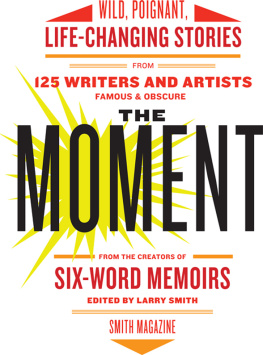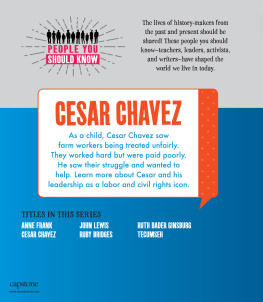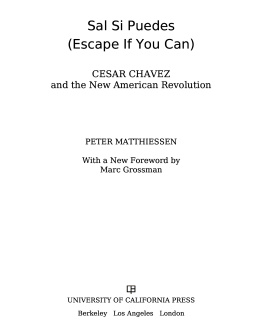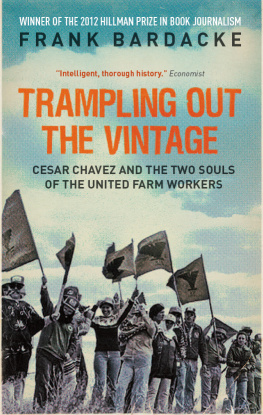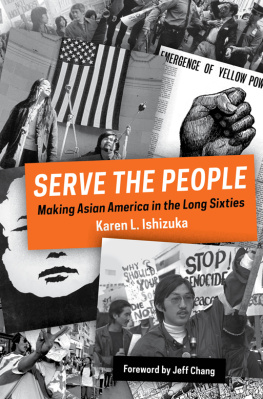TIME IT WAS
 TIME IT WAS
TIME IT WASAmerican Stories from the Sixties
Karen Manners Smith
Emporia State University, Emporia, Kansas
Tim Koster
Search Systems, Newbury Park, California
First published 2008 by Pearson Education, Inc.
Published 2016 by Routledge
2 Park Square, Milton Park, Abingdon, Oxon OX14 4RN
711 Third Avenue, New York, NY 10017, USA
Routledge is an imprint of the Taylor & Francis Group, an informa business
Copyright 2008 Taylor & Francis.
All rights reserved. No part of this book may be reprinted or reproduced or utilised in any form or by any electronic, mechanical, or other means, now known or hereafter invented, including photocopying and recording, or in any information storage or retrieval system, without permission in writing from the publishers.
Notice:
Product or corporate names may be trademarks or registered trademarks, and are used only for identification and explanation without intent to infringe.
Credits and acknowledgments borrowed from other sources and reproduced, with permission, in this textbook appear on appropriate page within text.
Cover Design: Bruce Kenselaar
ISBN-13: 978-0-13-184077-5 (pbk)
Library of Congress Cataloging-in-Publication Data
Smith, Karen Manners.
Time it was: American stories from the sixties/Karen Manners Smith and Tim Koster.
p. cm.
ISBN-13: 978-0-13-184077-5
1. United StatesHistory19611969Anecdotes.2. United StatesHistory19611969Biography.3. United StatesSocial conditions19601980Anecdotes.4. Social problemsUnited StatesHistory20th centuryAnecdotes.5. Social justiceUnited StatesHistory20th centuryAnecdotes.6. Vietnam War, 19611975Social aspectsAnecdotes.7. Vietnam War, 19611975United StatesAnecdotes.8. Vietnam War, 19611975Personal narratives, American.9. Nineteen sixtiesAnecdotes. I. Koster, Tim. II. Title.
E838.3.S64 2008
973.923dc22
2007010492
Dedication
To our spouses, Prudence Koster and Chris OCarroll; to Darryl, Dana, Noah, and Abraham, who were the inspiration; and to the memory of R. Thomas Collins, Jr., Steve Diamond, Paul Plato, and Leann Flynn.
Time it was, and what a time it was, it was
A time of innocence, a time of confidences
Long ago, it must be, I have a photograph
Preserve your memories, theyre all thats left you.
Paul Simon
Contents
Episodes in the Life of a U.S. Helicopter Pilot
A Draftee Writes to His Family from Vietnam
A Red Cross Volunteer in Vietnam
The Draft Lottery and an Unlucky Birthday
Escaping Post-War Vietnam
Working with SNCC in Mississippi, Freedom Summer 1964
Growing Up Black in the Jim Crow South
A Historian Traces Her Journey to Womens Liberation
Encountering the Militant Gay Liberation Movement
The Life of a Feminist Latina Lesbian
Spiritual Renewal in the American Indian Movement
Volunteer Tutoring with Upward Bound, 19651966
Teaching School in Africa
Psychedelics and Research in the Sixties
A Search for Simplicity and Spiritual Health
Five Years in a New Age Religious Cult
The Making of a Conservative
Campus Conservative Movements and the 1964 Goldwater for President Campaign
An Insiders View of Richard Nixons 1968 Republican Presidential Campaign
Undercover in the DEA
Reporting on the Cleveland Riots, July 1966
Innocence and Violence at the Democratic Convention
Remembering Three Days of Peace and Music, 1969
Two Students Recall the Shootings
The Free Speech Movement at the University of California at Berkeley
Women in the United Farm Workers Movement
Anti-Nuclear Activism and Civil Disobedience
HOW THIS BOOK CAME TO BE: A NOTE FROM THE EDITORS
We owe the genesis of Time It Was: American Stories from the Sixties to an e-mail. In the summer of 2001, Tim was searching online for some friends he had lost touch with over the years. One of these people was Karen, whom he had known at Boston University summer school in 1968. He found her e-mail address on her faculty web page at Emporia State University and wrote to her. Delighted to hear a voice from the past, she wrote back.
The first question we asked each other was, What happened to you? Tim explained that he won the first draft lottery held in 1969, was drafted, fought the draft, and was deferred as a conscientious objector. Karen revealed that she had dropped out of graduate school and spent five years with a religious cult.
In subsequent correspondence, we began to wonder what other Sixties stories might be out there, stories of people now leading ordinary lives who had done something brave or principled or adventurous or stupid in those days, or who had been caught up in one of the memorable events or movements of the period. We decided that a collection of such stories would make a great book for college students.
It has been our experience as parents, and Karens as both a parent and a university professor, that todays college students, the offspring of baby boomers, have little understanding of their parents young lives. Partly, this has happened because the parents themselves may feel that their colorful pasts have little to do with the lives they lead in the present. But the generation/knowledge gap has also occurred because of the culture wars of the last 25 years and a generalized disapproval of some aspects of Sixties youth activity. Many people who have great stories from the Sixties have been reluctant to tell them to their children.
Further, these children are confused by the very mystique of the 1960s that they have inherited. Whereas schools may have taught them the historical existence of a Vietnam War and a Civil Rights Movement, they see the Sixties, largely though the lens of the media, as a hazy mass of sex-and-drugs-and-psychedelic-music clichs, instead of the complex period of political and social experimentation that it was. Even those who can see beyond the montage of cultural imagery may assume that all the Sixties-era battles about race, class, gender, and sexuality have already been won. Few are aware that much of the twenty-first-century American culture they inhabit grew out of a mixture of Sixties initiatives and a reaction against the social upheaval of that era.
Whether students vaguely idealize the Sixties or despise the period as a national wrong turn, few today see avenues for meaningful involvement in social or political issues larger than themselves. We wanted to create a book that would help correct stereotypes by presenting detailed and vivid stories of individuals and, at the same time, demonstrate through personal narrative what young peoplemany of them very ordinarycan and did do. We wanted stories that would both enrich the historical narrative and provide examples of commitment and personal growth. We hoped that students would see something of themselves in these stories, and that they would begin to think about how individuals make history, and how they might become historical actors themselves.


